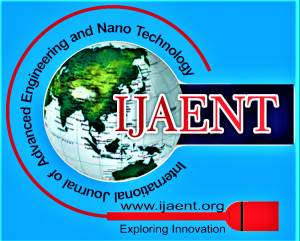![]()
Study the Effect of Ablation Time on the Spectroscopic Characteristics of Zinc Oxide Nan particles Synthesized by Liquid-Phase Pulsed Laser Ablation Technique
Suha I. Al-Nassar
Suha I. Al-Nassar, communication engineering, College of Engineering, Diyala University, Iraq.
Manuscript received on February 11, 2015. | Revised Manuscript Received on February 12, 2015. | Manuscript published on January 18, 2015. | PP: 28-31 | Volume-2 Issue-3, February 2015.
Open Access | Ethics and Policies | Cite
© The Authors. Published By: Blue Eyes Intelligence Engineering and Sciences Publication (BEIESP). This is an open access article under the CC BY-NC-ND license (http://creativecommons.org/licenses/by-nc-nd/4.0/)
Abstract: This work was devoted for producing ZnO nanoparticles by pulsed laser ablation (PLA) of Zn metal plate in the aqueous environment of cetyl trimethyl ammonium bromide (CTAB) using Q-Switched Nd:YAG pulsed laser with wavelength= 1064 nm, Rep. rate= 10 Hz, Pulse duration =6 ns and laser energy 50 mJ. Solution of nanoparticles is found stable in the colloidal form for a long time. The effect of ablation time on the optical and structure of ZnO was studied is characterized by UV-visible absorption. UV-visible absorption spectrum has four peaks at 256, 259,265,322 nm for ablation time (5, 10, 15, and 20 sec) respectively, our results show that UV–vis spectra show a blue shift in the presence of CTAB with decrease the ablation time and blue shift indicated to get smaller size of nanoparticles. The blue shift in the absorption edge indicates the quantum confinement property of nanoparticles. Also FTIR transmittance spectra of ZnO2 nanoparticles prepared in these states show a characteristic ZnO absorption at 435–445cm−1
Keywords: Ablation time, CTAB solution, pulsed laser ablation technique, Zinc oxide nanoparticles.
